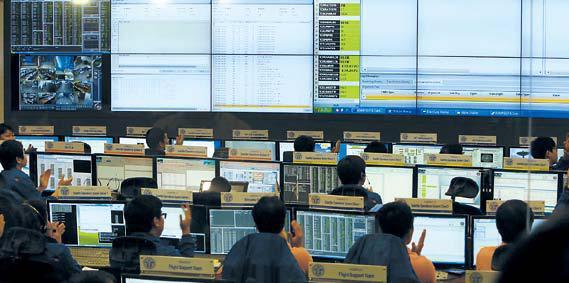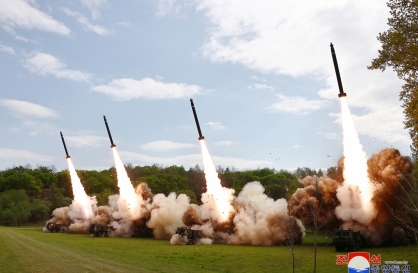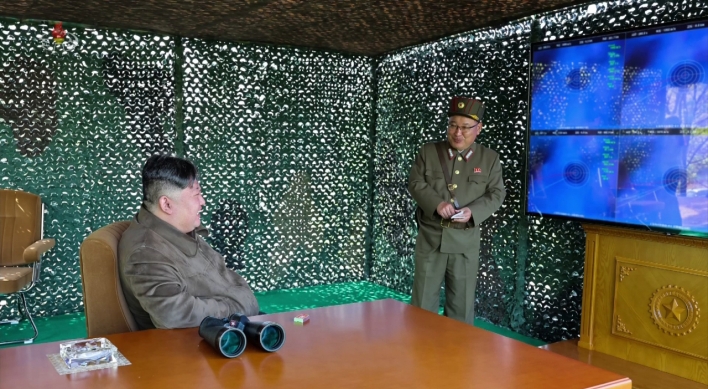Radio communication confirms successful launch of new satellite
By (공용)코리아헤럴드Published : Aug. 23, 2013 - 20:32

YASNY, Russia (Yonhap News) -- South Korea’s new multipurpose satellite made contact with a ground station in the Asian country early Friday, confirming its successful deployment into its target orbit, officials in Yasny said.
The first communication contact was made at 2:35 a.m. (5:35 a.m. KST), according to the officials from the Korea Aerospace Research Institute (KARI).
The Korea Multipurpose Satellite-5 (KOMPSAT-5) was launched Thursday from a launch base in Yasny, located some 1,800 kilometers southeast of Moscow, using Russia‘s Dnepr rocket, a space launch vehicle converted from a Soviet-era intercontinental ballistic missile.
Beacon signals from the satellite were initially picked up by the Troll Satellite Station in Antarctica, 32 minutes following the launch, partly indicating the satellite’s successful deployment into its orbit.
“The radio contact with South Korea‘s ground station in Daejeon further confirms that the satellite successfully reached its target orbit,” said Lee Sang-ryool, the head of KARI’s Aerospace Systems Laboratory who is also in charge of the KOMPSAT-5 program.
Still, it will take at least four months to confirm the satellite and all its equipment are working properly, he added.
The satellite, also known as the Arirang 5, is South Korea‘s fourth multipurpose satellite and the first with a synthetic aperture radar, which is an advanced form of side-looking airborne radar that uses radio waves to detect changes in its target area, enabling observation of the earth’s surface even at night and regardless of weather conditions.
The satellite will circle the earth 15 times a day for the next five years to carry out its objectives that include the so-called golden missions -- managing land and the oceans, monitoring disasters and the environment, and helping establish a geographic information system, according to KARI.
South Korea plans to launch another satellite, the KOMPSAT-3A, late next year.
It will be South Korea‘s first satellite with infrared radar that can detect changes in temperatures on the earth’s surface and underground, enabling the country to monitor underground activities, such as volcanoes and earthquakes.
The first communication contact was made at 2:35 a.m. (5:35 a.m. KST), according to the officials from the Korea Aerospace Research Institute (KARI).
The Korea Multipurpose Satellite-5 (KOMPSAT-5) was launched Thursday from a launch base in Yasny, located some 1,800 kilometers southeast of Moscow, using Russia‘s Dnepr rocket, a space launch vehicle converted from a Soviet-era intercontinental ballistic missile.
Beacon signals from the satellite were initially picked up by the Troll Satellite Station in Antarctica, 32 minutes following the launch, partly indicating the satellite’s successful deployment into its orbit.
“The radio contact with South Korea‘s ground station in Daejeon further confirms that the satellite successfully reached its target orbit,” said Lee Sang-ryool, the head of KARI’s Aerospace Systems Laboratory who is also in charge of the KOMPSAT-5 program.
Still, it will take at least four months to confirm the satellite and all its equipment are working properly, he added.
The satellite, also known as the Arirang 5, is South Korea‘s fourth multipurpose satellite and the first with a synthetic aperture radar, which is an advanced form of side-looking airborne radar that uses radio waves to detect changes in its target area, enabling observation of the earth’s surface even at night and regardless of weather conditions.
The satellite will circle the earth 15 times a day for the next five years to carry out its objectives that include the so-called golden missions -- managing land and the oceans, monitoring disasters and the environment, and helping establish a geographic information system, according to KARI.
South Korea plans to launch another satellite, the KOMPSAT-3A, late next year.
It will be South Korea‘s first satellite with infrared radar that can detect changes in temperatures on the earth’s surface and underground, enabling the country to monitor underground activities, such as volcanoes and earthquakes.



![[AtoZ into Korean mind] Humor in Korea: Navigating the line between what's funny and not](http://res.heraldm.com/phpwas/restmb_idxmake.php?idx=644&simg=/content/image/2024/04/22/20240422050642_0.jpg&u=)



![[Herald Interview] Why Toss invited hackers to penetrate its system](http://res.heraldm.com/phpwas/restmb_idxmake.php?idx=644&simg=/content/image/2024/04/22/20240422050569_0.jpg&u=20240422150649)

![[Graphic News] 77% of young Koreans still financially dependent](http://res.heraldm.com/phpwas/restmb_idxmake.php?idx=644&simg=/content/image/2024/04/22/20240422050762_0.gif&u=)





![[Exclusive] Korean military to ban iPhones over security issues](http://res.heraldm.com/phpwas/restmb_idxmake.php?idx=652&simg=/content/image/2024/04/23/20240423050599_0.jpg&u=)



